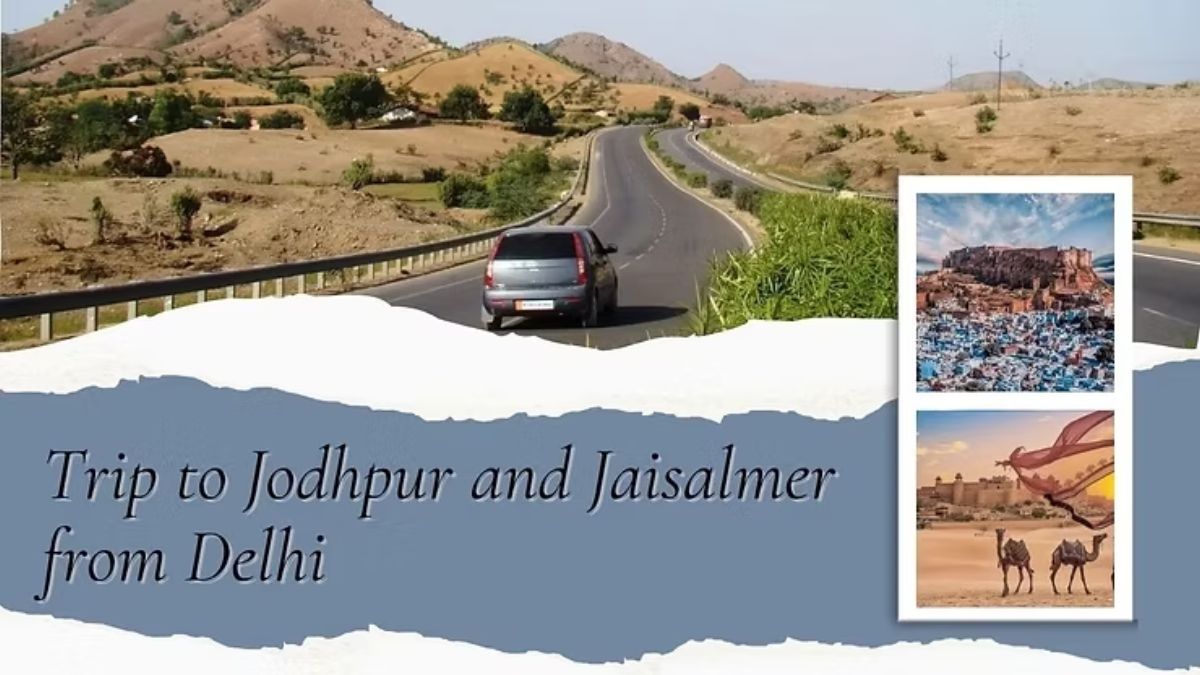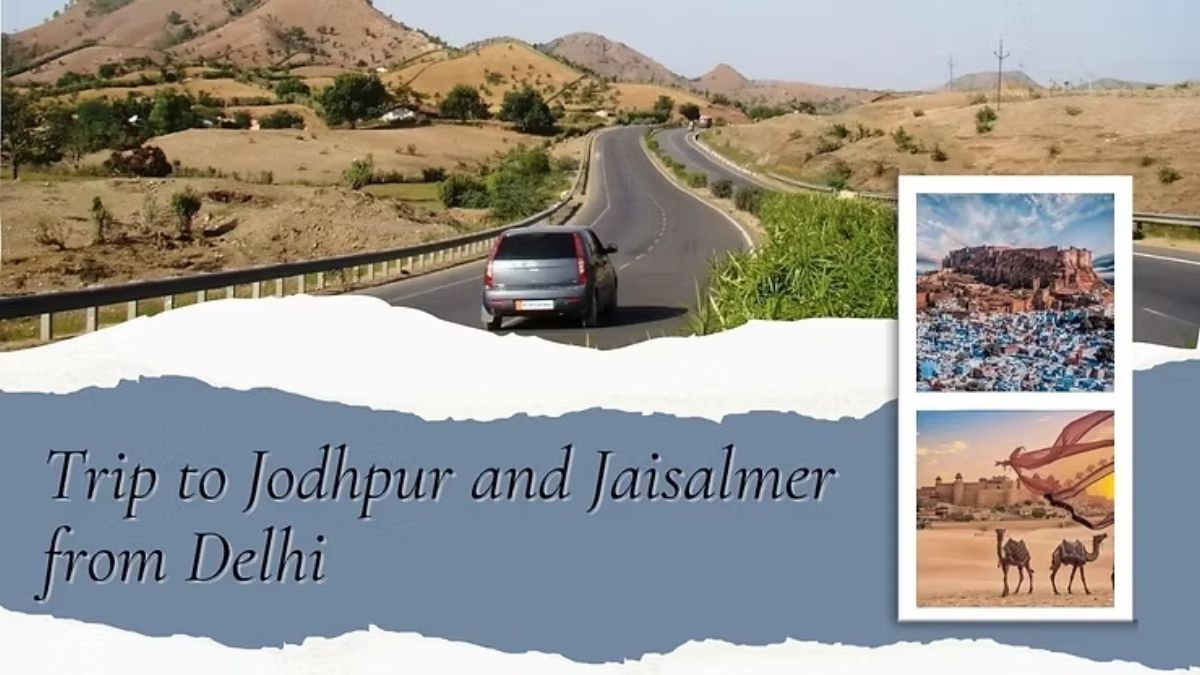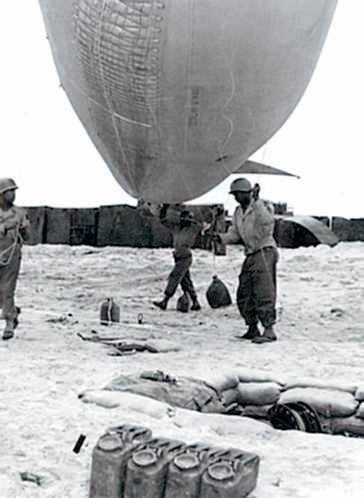Awesome read; if it doesn't bring a tear to your eye, you're not human; I am so proud to have been in an organization that instilled the values described in LTC Lofaro's speech below:
Dining-in speech at U.S. Military Academy
by LTC Guy Lofaro:
"Let me say before beginning that it has been my pleasure to attend several dinings-in here at West Point and hence I have some basis for comparison. You people have done a fine job and you ought to congratulate yourselves. In fact, why don't we take this time to have the persons who were responsible for this event stand so we can acknowledge them publicly.
I guess I am honored with these invitations because there exists this rumor that I can tell a story. Cadets who I have had in class sometimes approach me beforehand and request that, during my speech, I tell some of the stories I've told them in class. For the longest time I have resisted this. I simply didn't think this the right forum for story-telling, so I tried instead, with varying degrees of success, to use this time to impart some higher lesson - some thought that would perhaps stay with one or two of you a little longer than the 10 or 15 minutes I will be standing here. I tried this again last week at another dining in and I bombed. Big time. Of course, the cadets didn't say that. They said all the polite things- "Thank you, sir, for those inspiring words" - "You've provided us much food for thought" - "We all certainly learned something from you tonight, sir." And I'm thinking - yeah - you learned something all right. You learned never to invite that SOB to be a dining in speaker again.
So in the interim I've spent quite a bit of time thinking about what I would say to you to night. What can I say that will stay with you? And as I reflected on this I turned it on myself - what stays with me? What makes a mark on me? What do I remember, and why? How have I learned the higher lessons I so desperately want to impart to you? Well - I've learned those higher lessons through experience. And as I thought further, I realized that there's only one way to relate experience -that is to tell some stories. So I'm going to try something new here this evening. I'm going to give you your stories and attempt to relate what I've learned by living them. I'm going to let you crawl inside my eye-sockets and see some of the things I've seen these past 18 years.
Imagine you are a brand new second lieutenant on a peacekeeping mission in the Sinai Peninsula. You are less than a year out of West Point, and only a few weeks out of the basic course. You are standing at a strict position of attention in front of your battalion commander, a man you will come to realize was one of the finest soldiers with whom you've ever served, and you are being questioned about a mistake - a big mistake - that you've made. You see, your platoon lost some live ammo. Oh sure, it was eventually found, but for a few hours you had the entire battalion scrambling. Your battalion commander is not yelling at you though, he's not demeaning you, he's simply taking this opportunity to ensure you learn from the experience. And you do- you learn that people make mistakes, that those mistakes do not usually result in the end of the world, and that such occasions are valuable opportunities to impart some higher lessons. Then, out of the corner of your eye, you see your platoon sergeant emerge from behind a building. He's an old soldier - a fine soldier though - whose knees have seen a few too many airborne operations. He sees you and the colonel - and he takes off at a run. You see him approaching from behind the colonel and the next thing you see is the back of your platoon sergeant's head. He is now standing between you and your battalion commander - the two are eyeball to eyeball. Your platoon sergeant says, a touch of indignance in his voice "Leave my lieutenant alone, sir. He didn't lose the ammo, I did. I was the one who miscounted. You want someone's ass, you take mine."
And you learn another lesson - you learn about loyalty.
It's a few months later and you are one of two soldiers left on a hot PZ on some Caribbean island. There's been another foul up - not yours this time, but you're going to pay for it. It's you and your RTO, a nineteen-year-old surfer from Florida who can quote Shakespeare because his Mom was a high school literature teacher and who joined the army because his Dad was a WWII Ranger. The last UH-60 has taken off on an air assault and someone is supposed to come back and get you guys. But the fire is getting heavy, and you're not sure anything can get down there without getting shot up. You're taking fire from some heavily forested hills. At least two machineguns, maybe three, maybe more, and quite a few AKs, but you can't make out anything else. You and your RTO are in a hole, hunkered down as the bad guys are peppering your hole with small arms fire. Your RTO is trying to get some help - another bird to come get you, some artillery, some attack helicopters - anything. But there are other firefights happening elsewhere on this island involving much larger numbers.
So as the cosmos unfold at; that particular moment, in that particular place, you and that RTO are well down the order of merit list. You feel a tug at your pants leg. Ketch, that's what you call him, Ketch tells you he got a "wait, out" when he asked for help. The radio is jammed with calls for fire and requests for support from other parts of the island. "What we gonna do, sir?' he asks. And all of a sudden, you're learning another lesson. You're learning about the weightiness of command, because it's not just you in that hole, it's this kid you've spent every day with for the last five months. This kid you've come to love like a kid brother. There is only one way out and that's through the bad guys. You see, you are on a peninsula that rises about 100 feet from the sea. The inland side is where the bad guys are. You figure you are safe in this hole, so long as they don't bring in any indirect fire stuff, but if they come down off those hills, onto the peninsula, then you're going to have to fight it out. And that's what you tell your RTO. We either get help or, if the bad guys come for us, we fight. He looks at you. You don't know how long. And he says only four words. Two sentences. "Roger, sir. Let's rock." Appropriate coming from a surfer. Then he slithers back down to the bottom of the hole. Staying on the radio, your lifeline, trying to get some help. You are peering over the edge of the hole, careful not to make too big a target. You're thinking about your wife and that little month-old baby you left a few days ago. It was two o'clock in the morning when you got the call. "Pack your gear and get in here." You kissed them both and told them to watch the news. Hell, you didn't know where here you were going or why, but you were told to go, and you went.
Then all of a sudden it gets real loud, and things are flying all around and then there's a shadow that passes over you. You look up and find yourself staring at the bottom of a Blackhawk, about 15 feet over the deck, flying fast and low, and as it passes over your hole you see the door gunner dealing death and destruction on the bad guys in those hills. It sets down about 25 meters from your hole, as close as it can get. You look up and see the crew chief kneeling inside, waving frantically to you, the door gunner still dealing with it, trying to keep the bad guys' heads down, who have now switched their fire to the bird, a much bigger, and better, target. You look at Ketch and then you're off - and you run 25 meters faster than 25 meters have ever been run since humans began to walk upright. And you dive through the open doors onto the floor of the Blackhawk. There are no seats in the bird since this is combat and we don't use them in the real deal. And you are hugging your RTO, face-to-face, like a lover, and shouting at him "You OKAY? You OKAY? You OKAY?" but he doesn't tell you he's OKAY since he's yelling the same thing at you -- "You OKAY? You OKAY? You OKAY?" And then the pilot pulls pitch and executes a violent and steep ascent out of there and had you not been holding on to the d-rings in the floor and the crew chief not been holding your legs you might have fallen out. Then you're over the water, you're safe, and the bird levels out, and you roll over to your back and close your eyes - and you think you fall asleep. But then you feel a hand on your blouse, and you open your eyes and see the crew chief kneeling over you with a head set in his hand. He wants you to put it on so you do. And the first thing you hear is "I-Beamer, buddy boy. I Beamer." You were in I-4 while a cadet, and that was your rallying cry. And you look up to where the pilots sit and you see a head sticking out from behind one of the seats. He's looking at you and it's his voice you hear, but you can't make out who it is because his visor is down. Then he lifts it, and you see the face of a man who was 2 years ahead of you in your company. He tells you that he knew you were there and he wasn't going to leave an I-Beamer like that. And you learn about courage, and camaraderie. And friendship that never dies.
It's a few years later and you've already had your company command. You're in grad school, studying at Michigan. You get a phone call one night, one of the sergeants from your company. He tells you Harvey Moore is dead, killed in a training accident when his Blackhawk flew into the ground. Harvey Moore. Two time winner of the Best Ranger Competition. Great soldier. Got drunk one night after his wife left him and took his son. You see, staff sergeants don't make as much money as lawyers, so she left with the lawyer. He got stinking drunk, though it didn't take much since he didn't drink at all before this, and got into his car. Then had an accident. Then got a DUI. He was an E-6 promotable when this happened, and the SOP was a general-officer article 15 and a reduction one grade, which would really be two for him because he was on the promotion list. But Harvey Moore is a good soldier, and it's time to go to bat for a guy who, if your company command was any sort of a success, played a significant part in making it so. And you go with your battalion commander to see the CG, and you stand at attention in front of the CG's desk for 20 minutes convincing him that Harvey Moore deserves a break. You win. Harvey Moore never drinks again. He makes E-7. And when you change command, he grabs your arm, with tears in his eyes, and thanks you for all you've done. Then the phone call. And you learn about grief.
And then you're a major and you're back in the 82d - your home. And one day some SOB having a bad week decides it's time to take it out on the world and he shoots up a PT formation. Takes out 20 guys. You're one of them. 5.56 tracer round right to the gut. Range about 10 meters. And you're dead for a little while, but it's not your time yet - there are still too many lessons to learn. And you wake up after 5 surgeries and 45 days in a coma. And you look down at your body and you don't recognize it - it has become a receptacle for hospital tubing and electronic monitoring devices. You have a tracheotomy, so there's a huge tube going down your throat and you can't talk, but that thing is making sure you breathe. And there's a tube in your nose that goes down into your stomach - that's how you eat. And there are four IVs - one in each arm and two in the veins in the top of your feet. There is a tube through your right clavicle - that's where they inject the high-powered antibiotics that turns your hair white and makes you see things. But disease is the enemy now and it's gotta be done. And there are three tubes emerging from three separate holes in your stomach. They are there to drain the liquids from your stomach cavity. It drains into some bags hanging on the right;side of your bed. And they've shaved your chest and attached countless electrodes to monitor your heartbeat, blood pressure, and anything else they can measure. They have these things stuck all over your head as well, and on your wrists and ankles. And your family gathers around, and they are like rocks, and they pull you through. But there's also a guy, dressed in BDUs, with a maroon beret in his and, who stands quietly in the corner. Never says anything. Just smiles. And looks at you. He's there every day. Not every hour of every day, but he comes every day.
Sometimes he's there when you wake up. Sometimes he's there when you go to sleep. He comes during his lunch break. He stays an hour, or two, or three. And just stands in the corner. And smiles. No one told him to be there. But he made it his place of duty. His guard post. You see, it's your sergeant major, and his ranger buddy is down, and a ranger never leaves a fallen comrade. And you learn, through this man, the value of a creed.
(Note from Guy): if you've never read the Ranger Creed, Google it. The men of the Ranger Regiment live this creed every day. It is probably more powerful than wedding vows, and once you've lived by it, it's part of your life forever)
And every four hours two huge male nurses come in and gently roll you on your side. The bullet exited through your left buttock and made a hole the size of a softball. The bandages need to be changed. Take the soiled wads out and put clean ones in. And a second lieutenant comes in. She seems to be there all the time. She's the one changing the bandages. And it hurts like hell, but she, too, is smiling, and talking to you, and she's gentle. And you know you've seen her before, but you can't talk - you still have that tube in your throat. But she knows. And she tells you that you taught her Military Art History, that now it's her turn to take care of you, that she's in charge of you and the team of nurses assigned to you, and she won't let you down. And you learn about compassion.
And then it's months later and you're still recovering. Most of the tubes are gone but it's time for another round of major surgeries. And you go into one of the last, this one about 9 hours long. And they put you back together. And you wake up in the ICU one more time. Only one IV this time. And when you open your eyes, there's a huge figure standing over your bed. BDUs. Green beret in his hand. Bigger than God. And he's smiling. "It's about damn time you woke up you lazy bastard" he says. And you know it's your friend and former commander and you've got to come back with something quick - something good. He's the deputy Delta Force commander, soon to be the commander. And you say "Don't you have someplace else to be? Don't you have something more important to do?" And without skipping a beat, without losing that smile he says "Right now, I am doing what I consider the most important thing in the world."
And you learn about leadership.
So there you have them. Some stories. I've tried to let you see the world as I've seen it a various points in time these 18 years. I hope you've learned something. I certainly have."
For the record, I know these men personally, and I served during these times the writer is describing, I was there @ Hill AFB that dark night on 29 Oct '92 during the final hit of Operation Embryo Stage when RANGER Moore departed this rock, he was my buddy... I also recall very clearly that damn sniper doing his evil down @ Bragg... this world just never quits jackin with the good folks seems like. My point of all of this is while you are in the middle of it all, this Serving stuff, pay attention to those around you, that is what is Truly of most importance, gubmints will come and go, Honor, Courage, being Solid under extreme pressure and circumstance will be your test... make this world a little better of a place while you are among the living... and Never Forget the RANGER Harvey Moore's that you will meet along the way...
HOOAH!
RLTW! - NSDQ!
Awesome read; if it doesn't bring a tear to your eye, you're not human; I am so proud to have been in an organization that instilled the values described in LTC Lofaro's speech below:
Dining-in speech at U.S. Military Academy
by LTC Guy Lofaro:
"Let me say before beginning that it has been my pleasure to attend several dinings-in here at West Point and hence I have some basis for comparison. You people have done a fine job and you ought to congratulate yourselves. In fact, why don't we take this time to have the persons who were responsible for this event stand so we can acknowledge them publicly.
I guess I am honored with these invitations because there exists this rumor that I can tell a story. Cadets who I have had in class sometimes approach me beforehand and request that, during my speech, I tell some of the stories I've told them in class. For the longest time I have resisted this. I simply didn't think this the right forum for story-telling, so I tried instead, with varying degrees of success, to use this time to impart some higher lesson - some thought that would perhaps stay with one or two of you a little longer than the 10 or 15 minutes I will be standing here. I tried this again last week at another dining in and I bombed. Big time. Of course, the cadets didn't say that. They said all the polite things- "Thank you, sir, for those inspiring words" - "You've provided us much food for thought" - "We all certainly learned something from you tonight, sir." And I'm thinking - yeah - you learned something all right. You learned never to invite that SOB to be a dining in speaker again.
So in the interim I've spent quite a bit of time thinking about what I would say to you to night. What can I say that will stay with you? And as I reflected on this I turned it on myself - what stays with me? What makes a mark on me? What do I remember, and why? How have I learned the higher lessons I so desperately want to impart to you? Well - I've learned those higher lessons through experience. And as I thought further, I realized that there's only one way to relate experience -that is to tell some stories. So I'm going to try something new here this evening. I'm going to give you your stories and attempt to relate what I've learned by living them. I'm going to let you crawl inside my eye-sockets and see some of the things I've seen these past 18 years.
Imagine you are a brand new second lieutenant on a peacekeeping mission in the Sinai Peninsula. You are less than a year out of West Point, and only a few weeks out of the basic course. You are standing at a strict position of attention in front of your battalion commander, a man you will come to realize was one of the finest soldiers with whom you've ever served, and you are being questioned about a mistake - a big mistake - that you've made. You see, your platoon lost some live ammo. Oh sure, it was eventually found, but for a few hours you had the entire battalion scrambling. Your battalion commander is not yelling at you though, he's not demeaning you, he's simply taking this opportunity to ensure you learn from the experience. And you do- you learn that people make mistakes, that those mistakes do not usually result in the end of the world, and that such occasions are valuable opportunities to impart some higher lessons. Then, out of the corner of your eye, you see your platoon sergeant emerge from behind a building. He's an old soldier - a fine soldier though - whose knees have seen a few too many airborne operations. He sees you and the colonel - and he takes off at a run. You see him approaching from behind the colonel and the next thing you see is the back of your platoon sergeant's head. He is now standing between you and your battalion commander - the two are eyeball to eyeball. Your platoon sergeant says, a touch of indignance in his voice "Leave my lieutenant alone, sir. He didn't lose the ammo, I did. I was the one who miscounted. You want someone's ass, you take mine."
And you learn another lesson - you learn about loyalty.
It's a few months later and you are one of two soldiers left on a hot PZ on some Caribbean island. There's been another foul up - not yours this time, but you're going to pay for it. It's you and your RTO, a nineteen-year-old surfer from Florida who can quote Shakespeare because his Mom was a high school literature teacher and who joined the army because his Dad was a WWII Ranger. The last UH-60 has taken off on an air assault and someone is supposed to come back and get you guys. But the fire is getting heavy, and you're not sure anything can get down there without getting shot up. You're taking fire from some heavily forested hills. At least two machineguns, maybe three, maybe more, and quite a few AKs, but you can't make out anything else. You and your RTO are in a hole, hunkered down as the bad guys are peppering your hole with small arms fire. Your RTO is trying to get some help - another bird to come get you, some artillery, some attack helicopters - anything. But there are other firefights happening elsewhere on this island involving much larger numbers.
So as the cosmos unfold at; that particular moment, in that particular place, you and that RTO are well down the order of merit list. You feel a tug at your pants leg. Ketch, that's what you call him, Ketch tells you he got a "wait, out" when he asked for help. The radio is jammed with calls for fire and requests for support from other parts of the island. "What we gonna do, sir?' he asks. And all of a sudden, you're learning another lesson. You're learning about the weightiness of command, because it's not just you in that hole, it's this kid you've spent every day with for the last five months. This kid you've come to love like a kid brother. There is only one way out and that's through the bad guys. You see, you are on a peninsula that rises about 100 feet from the sea. The inland side is where the bad guys are. You figure you are safe in this hole, so long as they don't bring in any indirect fire stuff, but if they come down off those hills, onto the peninsula, then you're going to have to fight it out. And that's what you tell your RTO. We either get help or, if the bad guys come for us, we fight. He looks at you. You don't know how long. And he says only four words. Two sentences. "Roger, sir. Let's rock." Appropriate coming from a surfer. Then he slithers back down to the bottom of the hole. Staying on the radio, your lifeline, trying to get some help. You are peering over the edge of the hole, careful not to make too big a target. You're thinking about your wife and that little month-old baby you left a few days ago. It was two o'clock in the morning when you got the call. "Pack your gear and get in here." You kissed them both and told them to watch the news. Hell, you didn't know where here you were going or why, but you were told to go, and you went.
Then all of a sudden it gets real loud, and things are flying all around and then there's a shadow that passes over you. You look up and find yourself staring at the bottom of a Blackhawk, about 15 feet over the deck, flying fast and low, and as it passes over your hole you see the door gunner dealing death and destruction on the bad guys in those hills. It sets down about 25 meters from your hole, as close as it can get. You look up and see the crew chief kneeling inside, waving frantically to you, the door gunner still dealing with it, trying to keep the bad guys' heads down, who have now switched their fire to the bird, a much bigger, and better, target. You look at Ketch and then you're off - and you run 25 meters faster than 25 meters have ever been run since humans began to walk upright. And you dive through the open doors onto the floor of the Blackhawk. There are no seats in the bird since this is combat and we don't use them in the real deal. And you are hugging your RTO, face-to-face, like a lover, and shouting at him "You OKAY? You OKAY? You OKAY?" but he doesn't tell you he's OKAY since he's yelling the same thing at you -- "You OKAY? You OKAY? You OKAY?" And then the pilot pulls pitch and executes a violent and steep ascent out of there and had you not been holding on to the d-rings in the floor and the crew chief not been holding your legs you might have fallen out. Then you're over the water, you're safe, and the bird levels out, and you roll over to your back and close your eyes - and you think you fall asleep. But then you feel a hand on your blouse, and you open your eyes and see the crew chief kneeling over you with a head set in his hand. He wants you to put it on so you do. And the first thing you hear is "I-Beamer, buddy boy. I Beamer." You were in I-4 while a cadet, and that was your rallying cry. And you look up to where the pilots sit and you see a head sticking out from behind one of the seats. He's looking at you and it's his voice you hear, but you can't make out who it is because his visor is down. Then he lifts it, and you see the face of a man who was 2 years ahead of you in your company. He tells you that he knew you were there and he wasn't going to leave an I-Beamer like that. And you learn about courage, and camaraderie. And friendship that never dies.
It's a few years later and you've already had your company command. You're in grad school, studying at Michigan. You get a phone call one night, one of the sergeants from your company. He tells you Harvey Moore is dead, killed in a training accident when his Blackhawk flew into the ground. Harvey Moore. Two time winner of the Best Ranger Competition. Great soldier. Got drunk one night after his wife left him and took his son. You see, staff sergeants don't make as much money as lawyers, so she left with the lawyer. He got stinking drunk, though it didn't take much since he didn't drink at all before this, and got into his car. Then had an accident. Then got a DUI. He was an E-6 promotable when this happened, and the SOP was a general-officer article 15 and a reduction one grade, which would really be two for him because he was on the promotion list. But Harvey Moore is a good soldier, and it's time to go to bat for a guy who, if your company command was any sort of a success, played a significant part in making it so. And you go with your battalion commander to see the CG, and you stand at attention in front of the CG's desk for 20 minutes convincing him that Harvey Moore deserves a break. You win. Harvey Moore never drinks again. He makes E-7. And when you change command, he grabs your arm, with tears in his eyes, and thanks you for all you've done. Then the phone call. And you learn about grief.
And then you're a major and you're back in the 82d - your home. And one day some SOB having a bad week decides it's time to take it out on the world and he shoots up a PT formation. Takes out 20 guys. You're one of them. 5.56 tracer round right to the gut. Range about 10 meters. And you're dead for a little while, but it's not your time yet - there are still too many lessons to learn. And you wake up after 5 surgeries and 45 days in a coma. And you look down at your body and you don't recognize it - it has become a receptacle for hospital tubing and electronic monitoring devices. You have a tracheotomy, so there's a huge tube going down your throat and you can't talk, but that thing is making sure you breathe. And there's a tube in your nose that goes down into your stomach - that's how you eat. And there are four IVs - one in each arm and two in the veins in the top of your feet. There is a tube through your right clavicle - that's where they inject the high-powered antibiotics that turns your hair white and makes you see things. But disease is the enemy now and it's gotta be done. And there are three tubes emerging from three separate holes in your stomach. They are there to drain the liquids from your stomach cavity. It drains into some bags hanging on the right;side of your bed. And they've shaved your chest and attached countless electrodes to monitor your heartbeat, blood pressure, and anything else they can measure. They have these things stuck all over your head as well, and on your wrists and ankles. And your family gathers around, and they are like rocks, and they pull you through. But there's also a guy, dressed in BDUs, with a maroon beret in his and, who stands quietly in the corner. Never says anything. Just smiles. And looks at you. He's there every day. Not every hour of every day, but he comes every day.
Sometimes he's there when you wake up. Sometimes he's there when you go to sleep. He comes during his lunch break. He stays an hour, or two, or three. And just stands in the corner. And smiles. No one told him to be there. But he made it his place of duty. His guard post. You see, it's your sergeant major, and his ranger buddy is down, and a ranger never leaves a fallen comrade. And you learn, through this man, the value of a creed.
(Note from Guy): if you've never read the Ranger Creed, Google it. The men of the Ranger Regiment live this creed every day. It is probably more powerful than wedding vows, and once you've lived by it, it's part of your life forever)
And every four hours two huge male nurses come in and gently roll you on your side. The bullet exited through your left buttock and made a hole the size of a softball. The bandages need to be changed. Take the soiled wads out and put clean ones in. And a second lieutenant comes in. She seems to be there all the time. She's the one changing the bandages. And it hurts like hell, but she, too, is smiling, and talking to you, and she's gentle. And you know you've seen her before, but you can't talk - you still have that tube in your throat. But she knows. And she tells you that you taught her Military Art History, that now it's her turn to take care of you, that she's in charge of you and the team of nurses assigned to you, and she won't let you down. And you learn about compassion.
And then it's months later and you're still recovering. Most of the tubes are gone but it's time for another round of major surgeries. And you go into one of the last, this one about 9 hours long. And they put you back together. And you wake up in the ICU one more time. Only one IV this time. And when you open your eyes, there's a huge figure standing over your bed. BDUs. Green beret in his hand. Bigger than God. And he's smiling. "It's about damn time you woke up you lazy bastard" he says. And you know it's your friend and former commander and you've got to come back with something quick - something good. He's the deputy Delta Force commander, soon to be the commander. And you say "Don't you have someplace else to be? Don't you have something more important to do?" And without skipping a beat, without losing that smile he says "Right now, I am doing what I consider the most important thing in the world."
And you learn about leadership.
So there you have them. Some stories. I've tried to let you see the world as I've seen it a various points in time these 18 years. I hope you've learned something. I certainly have."
For the record, I know these men personally, and I served during these times the writer is describing, I was there @ Hill AFB that dark night on 29 Oct '92 during the final hit of Operation Embryo Stage when RANGER Moore departed this rock, he was my buddy... I also recall very clearly that damn sniper doing his evil down @ Bragg... this world just never quits jackin with the good folks seems like. My point of all of this is while you are in the middle of it all, this Serving stuff, pay attention to those around you, that is what is Truly of most importance, gubmints will come and go, Honor, Courage, being Solid under extreme pressure and circumstance will be your test... make this world a little better of a place while you are among the living... and Never Forget the RANGER Harvey Moore's that you will meet along the way...
HOOAH!
RLTW! - NSDQ!


























































